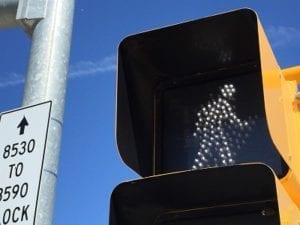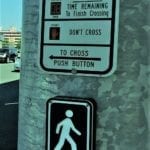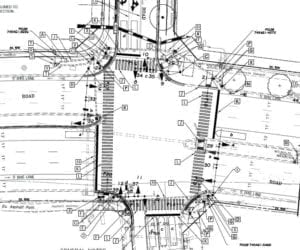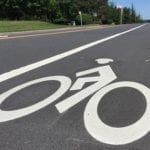By Christopher Turnbull and Salah Salem
When traffic signals work, we don’t pay much attention. When they don’t, we get frustrated. At that point, citizens sometimes point out that a signal needs modification. If you’re a developer, you may be required to plan or modify signals near your project. So how do traffic engineers design traffic signals?

At Wells + Associates, our Traffic Design team has managed thousands of traffic signal designs and modifications – in cities, suburbs, by office parks, schools, and commercial areas. But before one considers actually designing a signal, one is often faced with a traffic signal warrant analysis. Yes, that term just rolls off the tongue.
A warrant analysis is a pretty straightforward concept: Does this intersection warrant a signal? While a lot can go into a signal warrant analysis, the impetus for it can come from everyday commuters – neighborhood drivers, parents dropping kids off at school, and employees trying to get to the office.
But back to the question: how do you successfully plan, design, and modify traffic signals? The short answer: It depends. The longer answer? Read on…
Traffic Signal Design and Modification: The Basics
 When it comes to traffic signal engineering, a lot of factors can come into play, such as:
When it comes to traffic signal engineering, a lot of factors can come into play, such as:
- What is the primary need for the design or modification?
- What special attention should be taken into consideration at the intersection – such as a new school?
- How does the signal need to be incorporated into the overall traffic network (for example, nearby traffic signals or new roads)?
- What kind of traffic signal equipment is needed? Will the site support the desired infrastructure?
- What local ordinances and specifications should the signal plan conform to?
- Does the plan meet ADA (Americans with Disabilities Act) requirements?
- What kind of pavement markings are required?
For a traffic engineer, most of the answers to these questions lie in the Manual on Uniform Traffic Control Devices (MUTCD), a standards document issued by the Federal Highway Administration that was first published in 1935. If the MUTCD sounds like it may contain too much technical information for your liking, that’s ok – that’s what traffic engineers and transportation planners are for.
What Is a Traffic Control Device, and Does It Apply to My Development?

If you’re a developer, you’re often required to plan or modify signals near your project. Whether it is a provision in a proffer for a development, or a result of analysis and warrants performed indicating a need, a traffic signal plan will have to be prepared to detail the proposed work at the traffic signal.
The MUTCD contains national design standards as well as guidance, options, and support provisions for traffic control devices. What is a “traffic control device”? Most people would probably answer, “traffic signals,” and that is true.
But traffic control devices also include the signs and pavement markings which promote safety and efficiency on streets and highways. Naturally, signs and pavement markings are an integral part of intersections, along with traffic signals.
Aren’t All Traffic Signals The Same?
Importantly, while the MUTCD is a national design standard, state and local jurisdictions have chosen to either adopt the MUTCD standards in full, prepare their own version, or provide a supplement of additional standards and guidelines.
As traffic engineers, it is our duty apply the principles, guidelines, and standards of the MUTCD and their jurisdictional counterparts to our traffic signal designs, reconstructions, and modifications.
The Future of Traffic Signal Design: Complete Streets
 What does the future of traffic signal design look like? A major trend is to design for “complete streets,” which incorporates into the infrastructure multiple modes of transportation, such as the growing number of cyclists and pedestrians.
What does the future of traffic signal design look like? A major trend is to design for “complete streets,” which incorporates into the infrastructure multiple modes of transportation, such as the growing number of cyclists and pedestrians.
Another increasingly important consideration is to design intersections upfront for ADA accessibility, which allows people of all ages and abilities to have equal opportunities for mobility and transportation. In such cases, the location of a crosswalk is where ADA ramps are located, and the ramp and crosswalk location determines the stop bar and signal equipment locations.
A newer consideration is the role of technology, such as the devices and software that make up the Internet of Things (IoT). Some have actually conceived of intersections without signals, in which vehicles communicate with each other rather than taking instructions from a central signal.
The absence of signals at intersections is probably a long ways away. In the meantime, it may be more useful to study the history of the traffic signal. If you’d like more information on this, a nice survey of this topic was recently published on the Live Science blog: Who Invented the Traffic Light?

